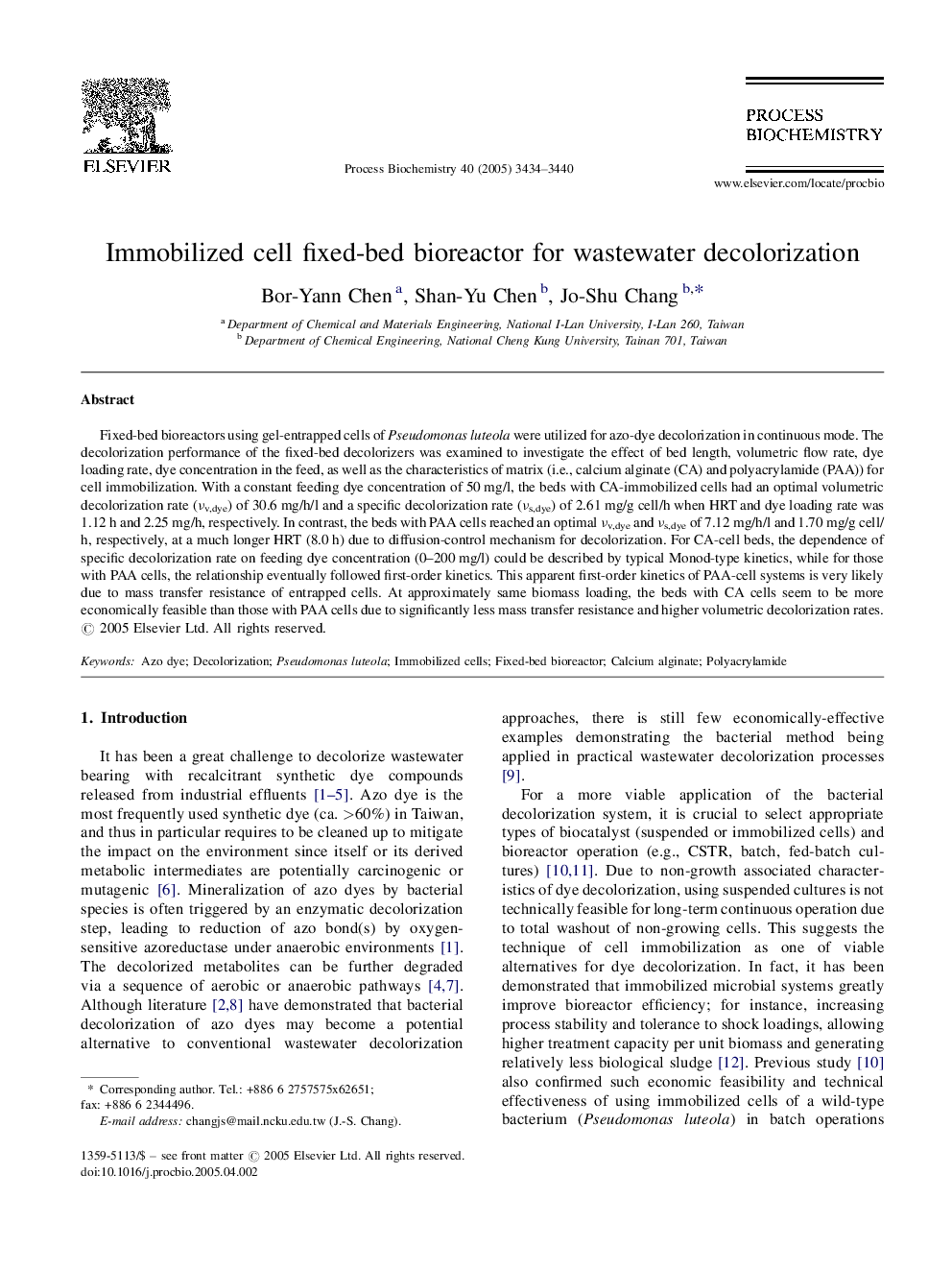| Article ID | Journal | Published Year | Pages | File Type |
|---|---|---|---|---|
| 36497 | Process Biochemistry | 2005 | 7 Pages |
Fixed-bed bioreactors using gel-entrapped cells of Pseudomonas luteola were utilized for azo-dye decolorization in continuous mode. The decolorization performance of the fixed-bed decolorizers was examined to investigate the effect of bed length, volumetric flow rate, dye loading rate, dye concentration in the feed, as well as the characteristics of matrix (i.e., calcium alginate (CA) and polyacrylamide (PAA)) for cell immobilization. With a constant feeding dye concentration of 50 mg/l, the beds with CA-immobilized cells had an optimal volumetric decolorization rate (νv,dye) of 30.6 mg/h/l and a specific decolorization rate (νs,dye) of 2.61 mg/g cell/h when HRT and dye loading rate was 1.12 h and 2.25 mg/h, respectively. In contrast, the beds with PAA cells reached an optimal νv,dye and νs,dye of 7.12 mg/h/l and 1.70 mg/g cell/h, respectively, at a much longer HRT (8.0 h) due to diffusion-control mechanism for decolorization. For CA-cell beds, the dependence of specific decolorization rate on feeding dye concentration (0–200 mg/l) could be described by typical Monod-type kinetics, while for those with PAA cells, the relationship eventually followed first-order kinetics. This apparent first-order kinetics of PAA-cell systems is very likely due to mass transfer resistance of entrapped cells. At approximately same biomass loading, the beds with CA cells seem to be more economically feasible than those with PAA cells due to significantly less mass transfer resistance and higher volumetric decolorization rates.
